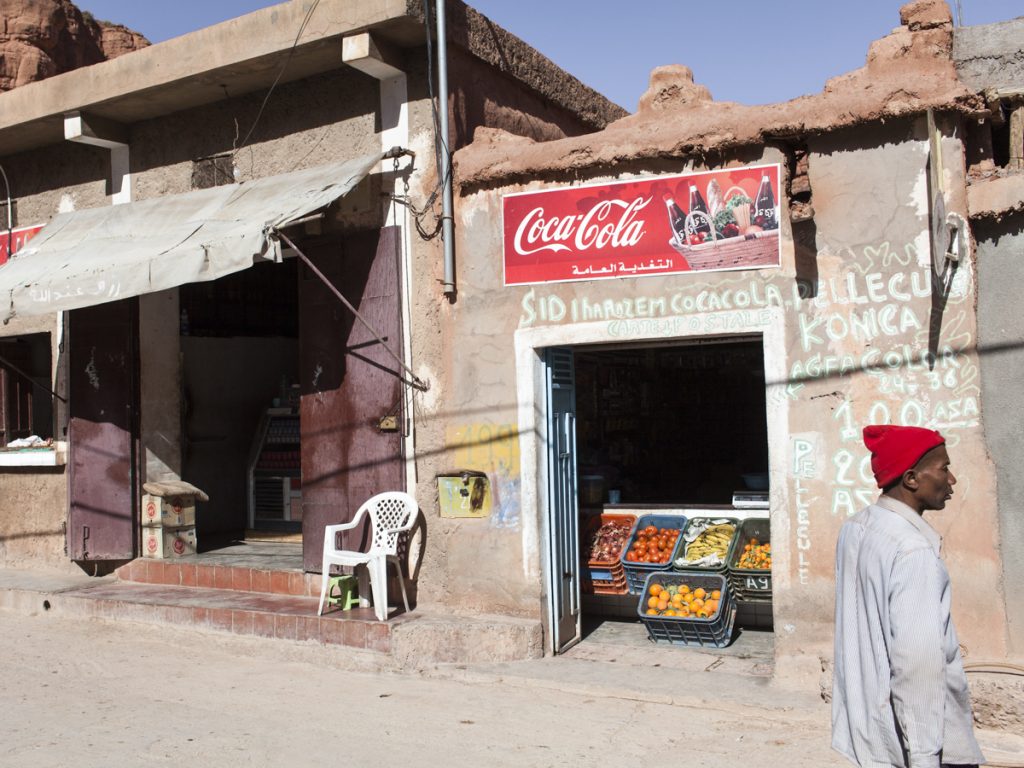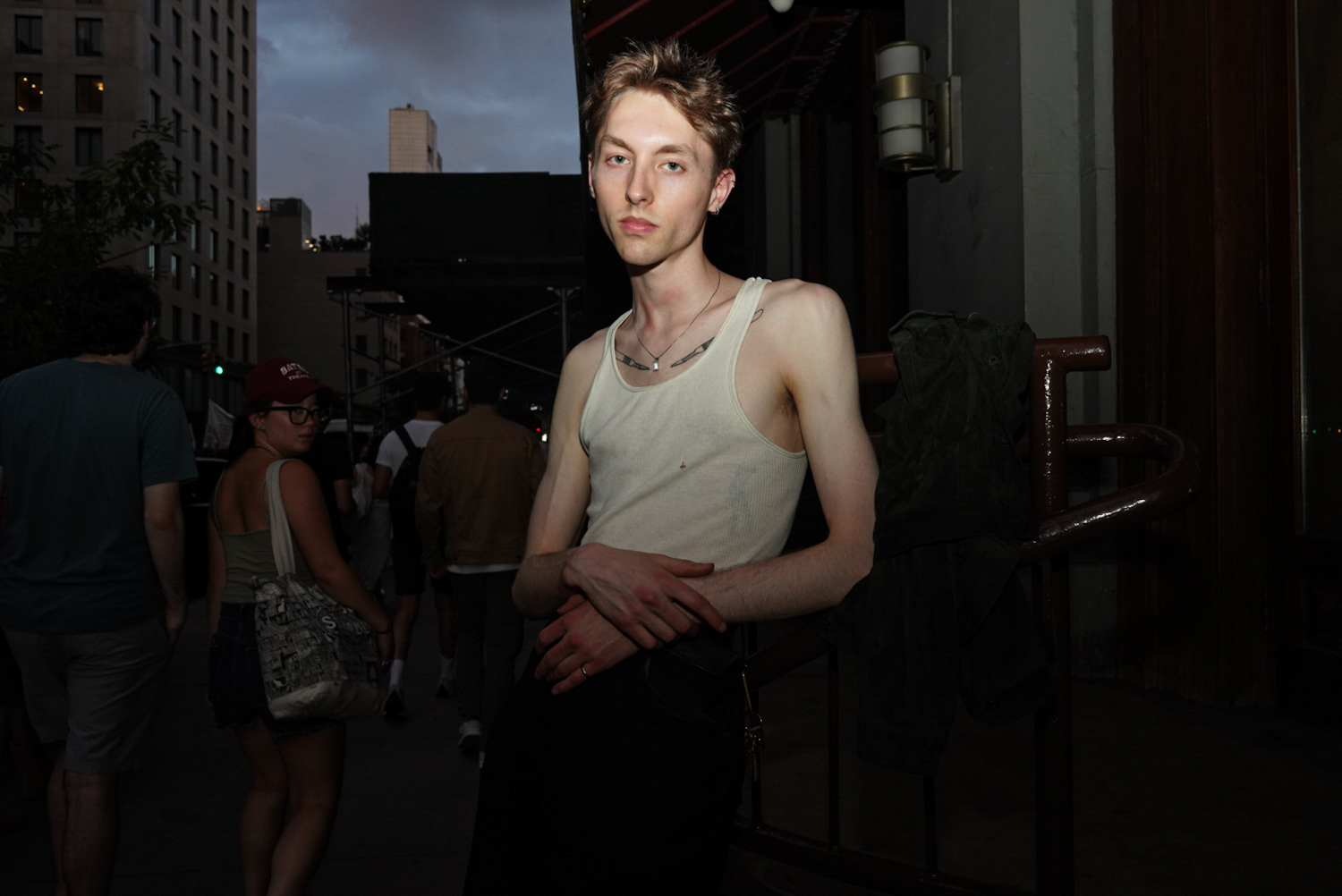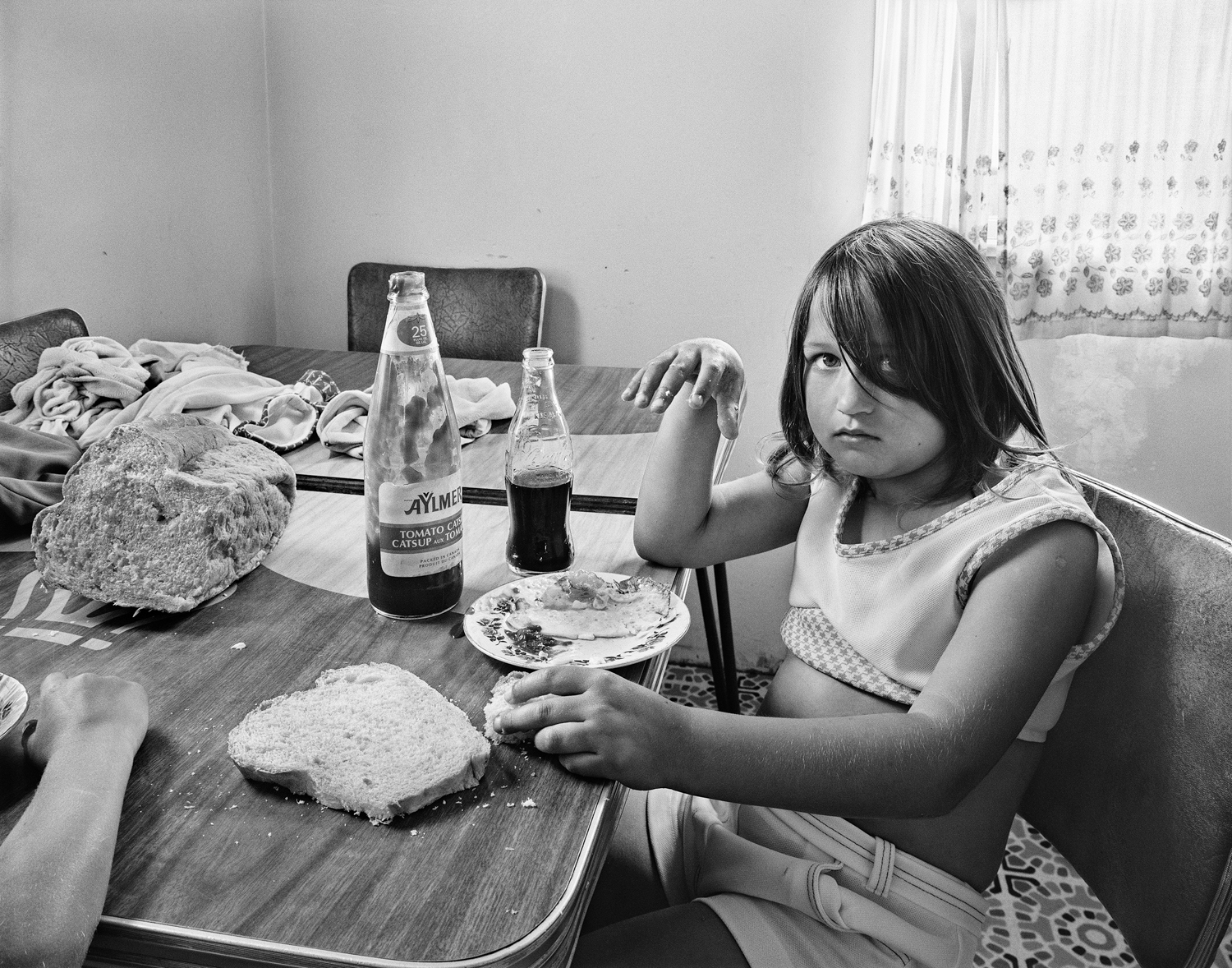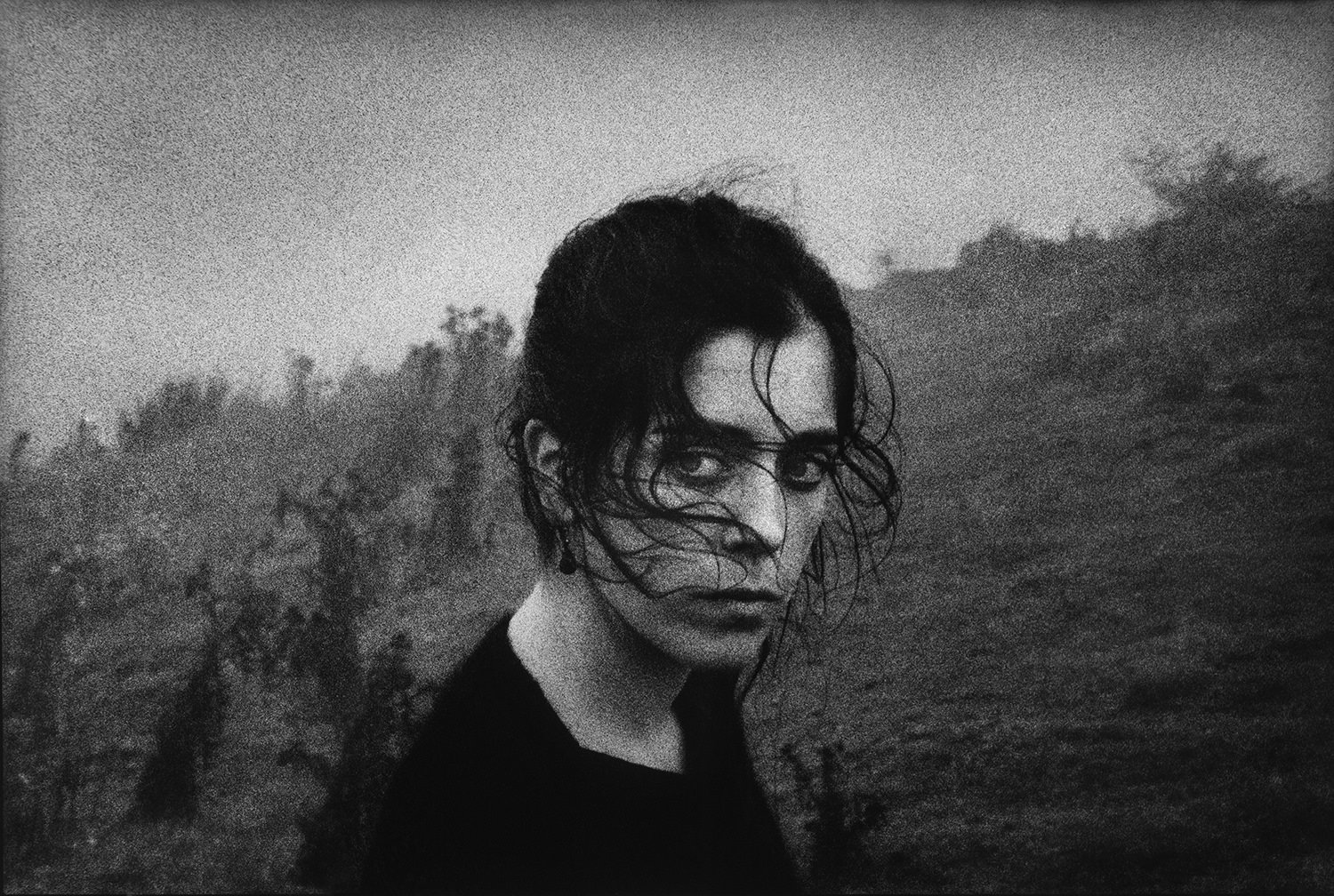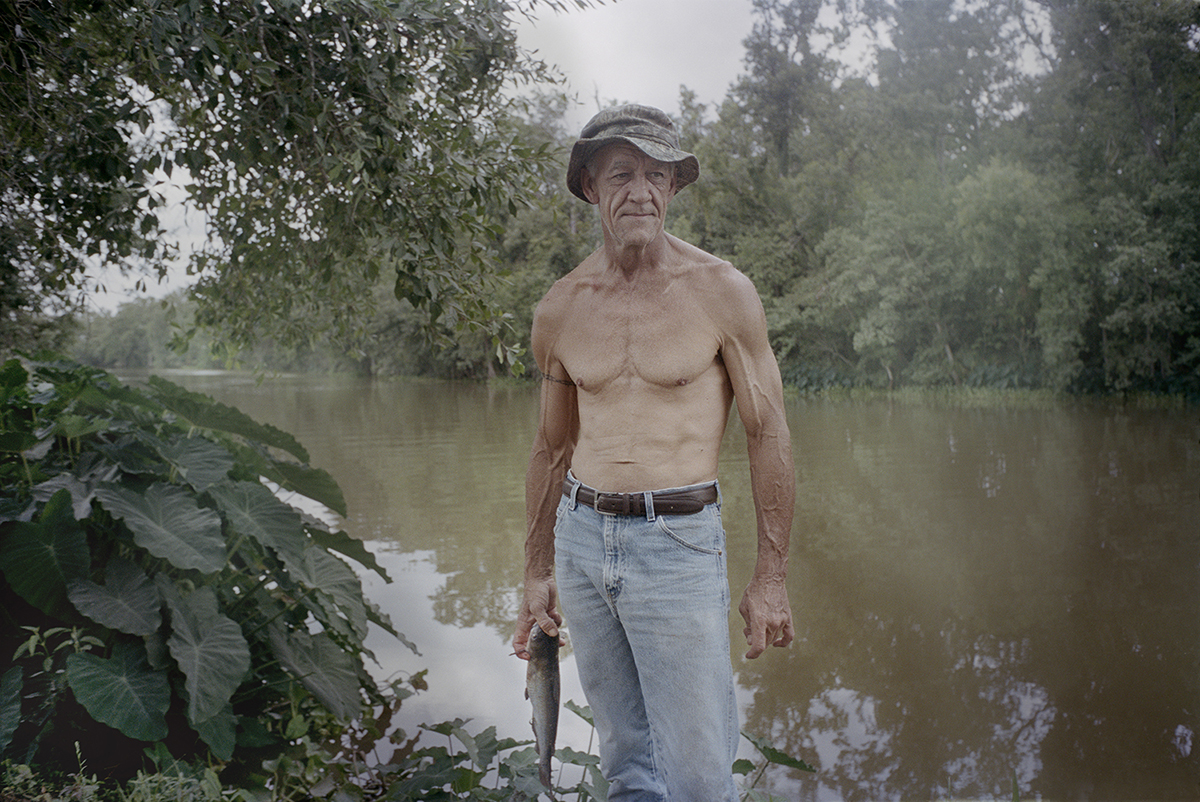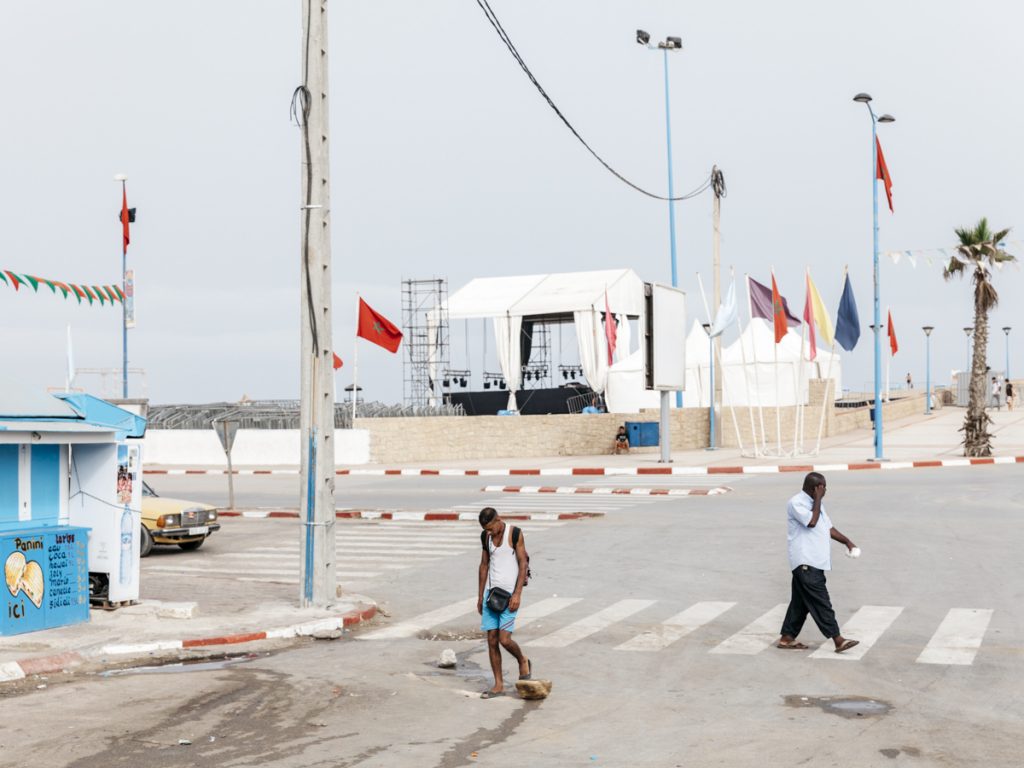
In 2009 you started a long work on the transformation of the Moroccan landscape. This work consists of several routes. These series nevertheless have one point in common, the development of tourism in Morocco. They followed the will of King Mohamed VI to make a major economy in Morocco. Can you tell us about the genesis of the project and then these evolutions over time?
The genesis of this project took place in 2008 during a trip to the province of Oujda, a region adjacent to the Algerian border closed since 1994. A region with little tourism but which is tending to become so. Everyone was only talking about the « Mediterrania Saidia » project, a new Eldorado for tourism in Morocco. This new tourist center is part of the Azur plan which provides for the creation of 6 seaside resorts to attract 10 million tourists by 2010.
In my first series, from 2009 to 2012 back and forth between trips, I am interested in landscape changes with a documentary approach. Two series will emerge from this period, « Mediterrania Saidia » (2009) and « A l’horizon les témoins » (2011). This last work will be exhibited at the Circulation(s) festival in 2013. In 2012, I decided to settle in Morocco both to continue my work as an author and to develop a commissioned work for the press. Very quickly my vision of Morocco changed because this country became my daily life. I have more time to work, go for a walk, and take pictures. My photographic practice rapidly evolves towards a more contemplative approach to landscape and I gradually detach myself from the documentary side. During 4 years, I will photograph Morocco, either through personal series or through commissions. Sometimes these two practices will mix to become one.
« The country, the landscapes then become characters in their own right. People there are like silent actors seeming to play in the set I chose for them. »
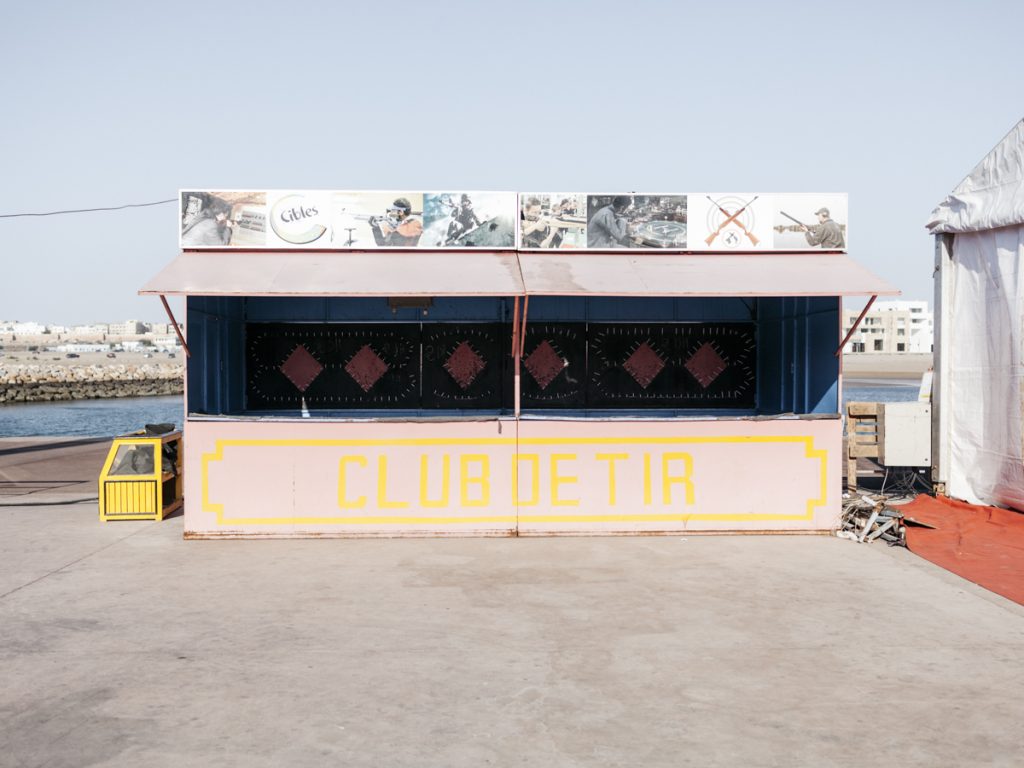
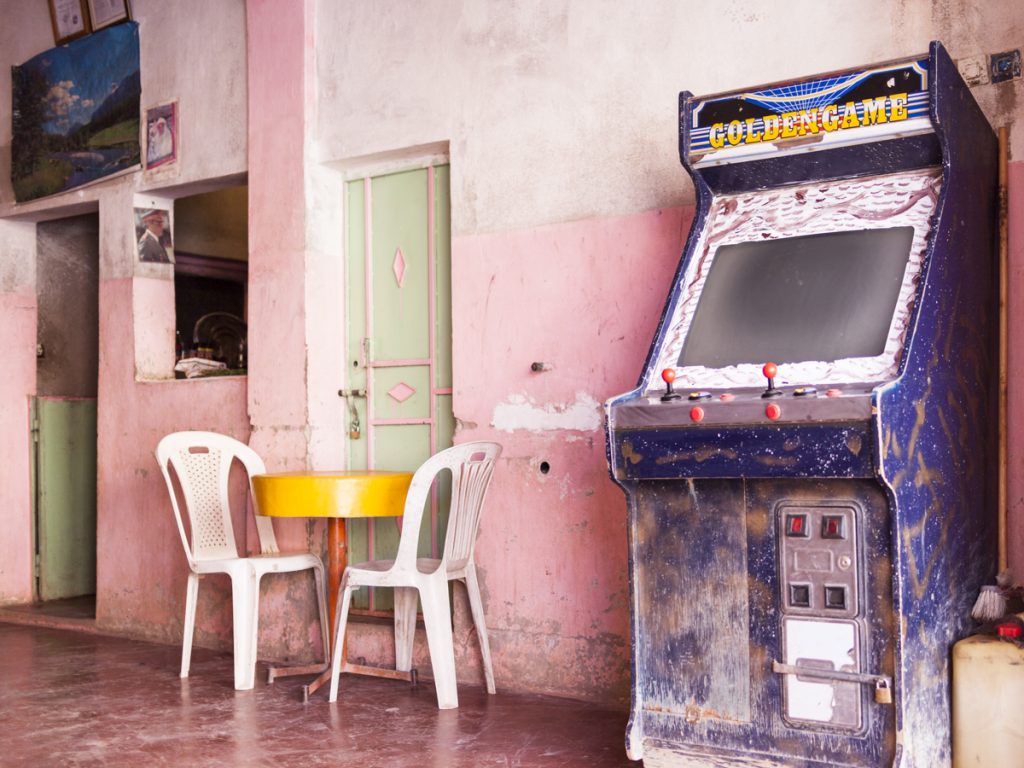
How did this more contemplative approach translate into your approach?
My approach no longer seeks to show a reality or to document but rather to show a reality that is specific to me where through images I try to capture a moment, a shift that makes fiction. The country and the landscapes then become characters in their own right. People there are like silent actors seeming to play in the set I chose for them. There is no actual staging. These are the details that emerge from this photographic expectation and create a kind of imaginary land.
From these years will emerge several series » Postcard from Morocco » (2013-2016), » Le littoral, une autre frontière » (2015).In 2017, the gallery Le Carré d’Art in Chartres de Bretagne invited me to present my work in Morocco. From this exhibition project was born » L’apparition d’un lointain si proche » (2009-2016) which retraces a 7-year journey through a real territory, in full urban development, resolutely contemporary, yet photographed out of time. This work was then exhibited at the French Institute in Casablanca and Marrakech and the Archifoto Prize.
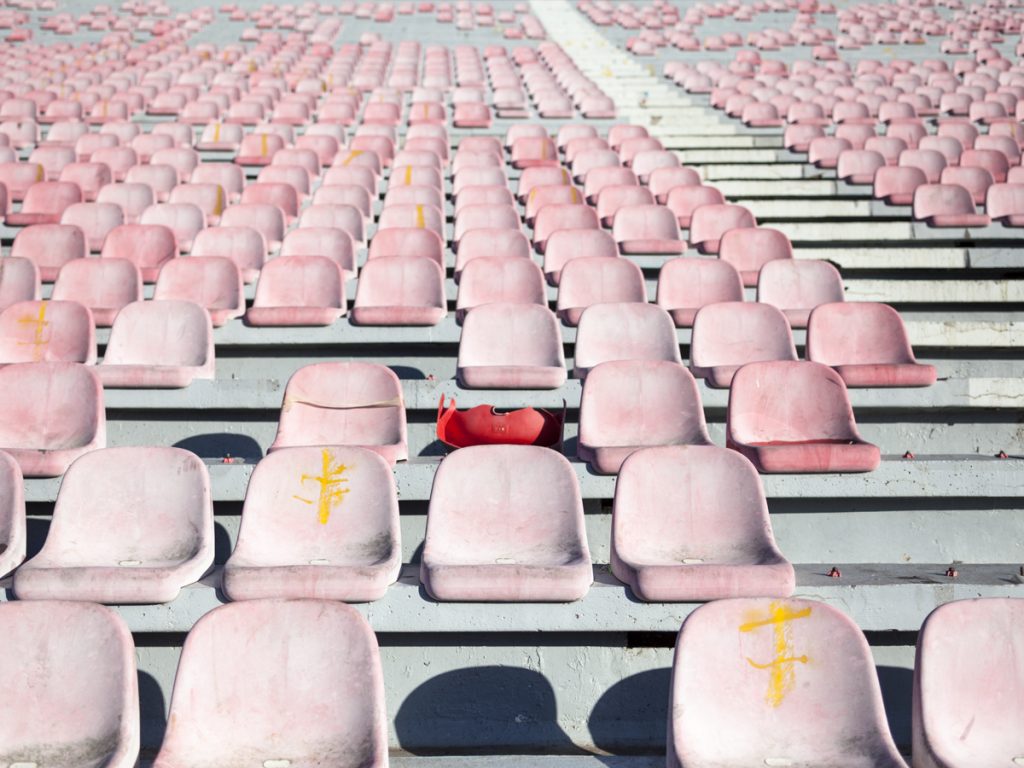
Isn’t « So far yet so close » finally the name of the project encompassing your different series on urban development in Morocco, which could perhaps be the subject of a book? Or will it remain the name of an exhibition?
This title was originally the provisional title of one of my series produced between 2012 and 2015. When I started preparing this exhibition project with the gallery Le Carré d’Art, it became quite obvious to me that this title was finally the one that would bring together all of my work done in Morocco since 2009. It evokes for me the discovery of a new country, a new territory, a new culture. In the beginning, therefore, a faraway country both in its culture and geography which will gradually become my daily life from 2012. I will then get to know this country, I will survey it during these few years and thus get closer to it. This work is my vision of Morocco today. I never think in advance about the final form of the work. It’s both what I lack at times but it’s also what gives me greater creative freedom.

For « So far yet so close » the exhibition project came quite naturally. The desire to also make it a publishing project has always been present. I’ve always loved books. The exhibition and the edition are 2 very different forms of narration. The exhibition is ephemeral while the book leaves a trace in time. But they can also be complementary and this is where the project becomes interesting. Making a book that uses the exposed images as they are doesn’t make sense to me. I think that’s why it’s not easy for me to think of my project as a book because it was first conceived as an exhibition. I need to find someone else (a publisher, who knows how to make a book) to help me design this project and step back from my work.
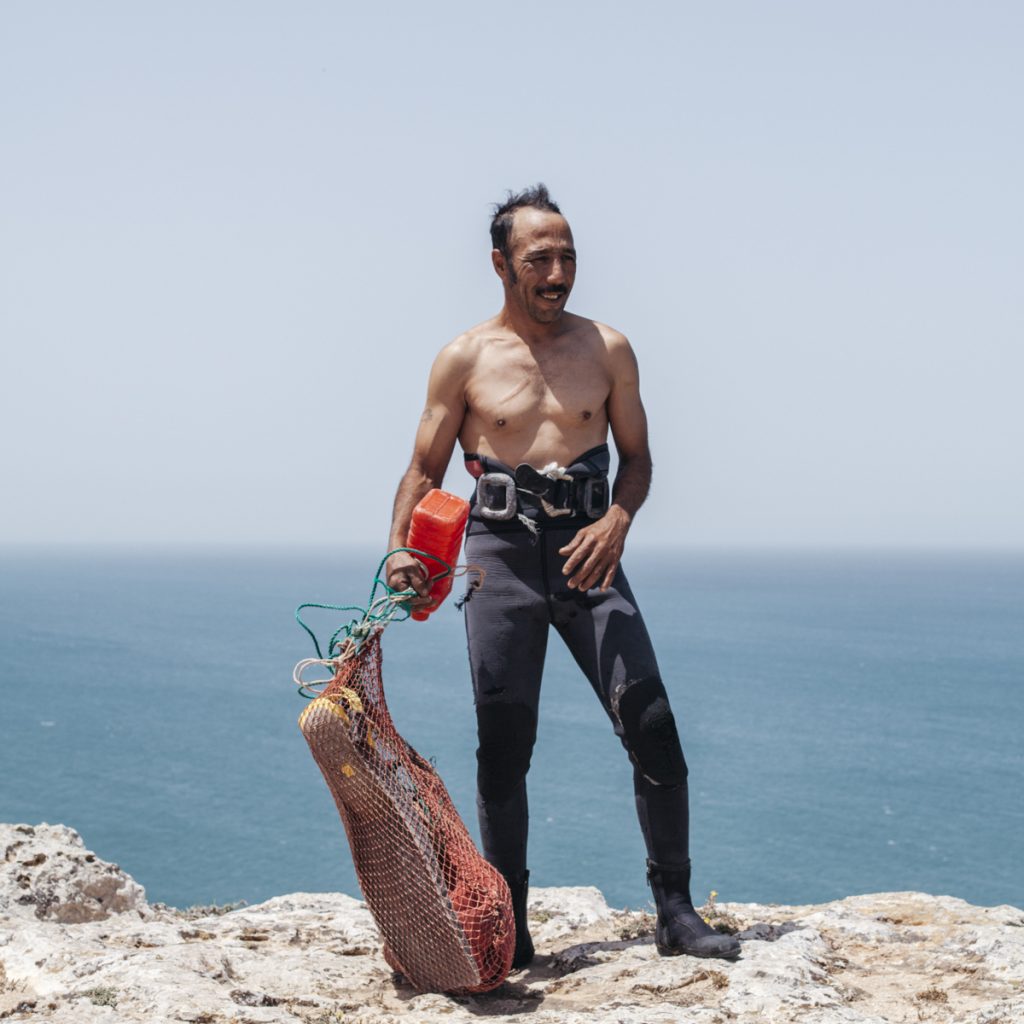
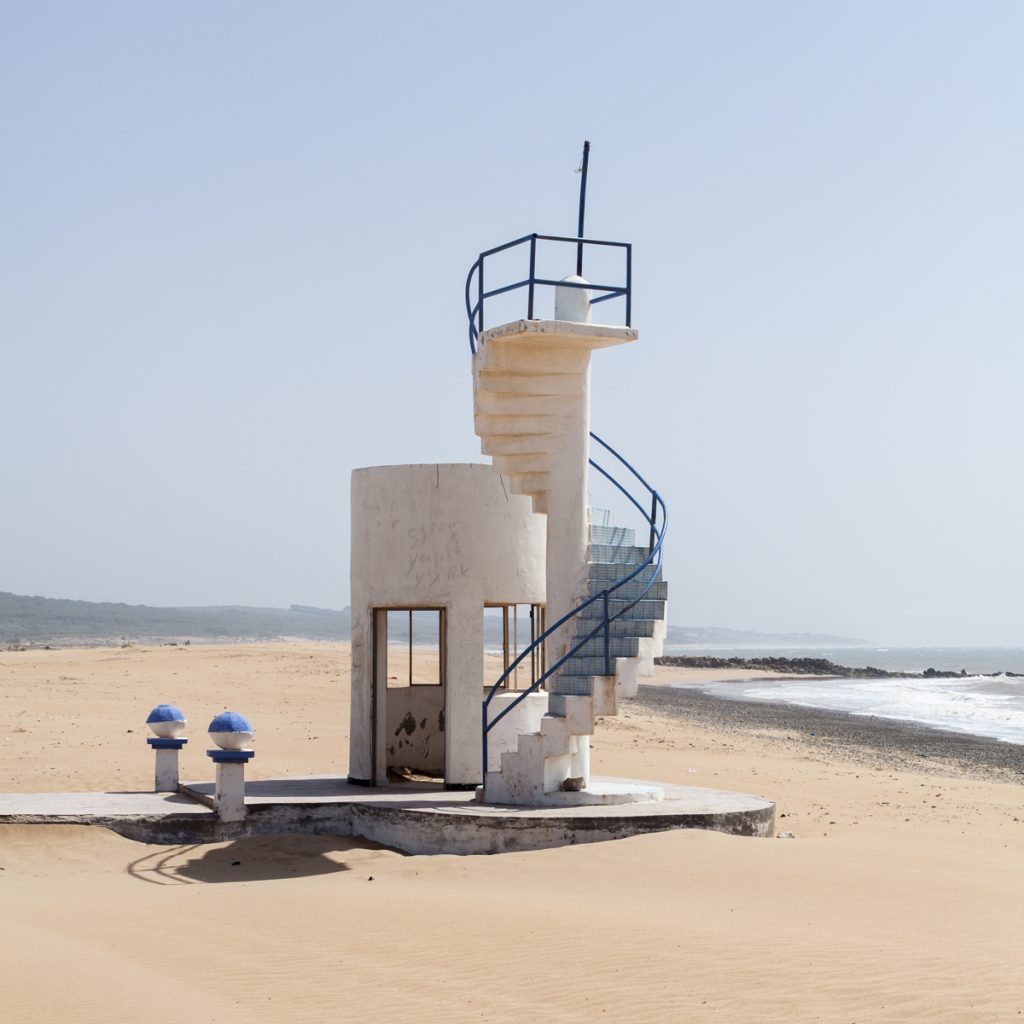
If you have the opportunity to publish your work in Morocco. Would you go for a self-publishing of this book or would you look for a publishing house? It may be too early to answer that question.
Both possibilities are to be considered. Finding a publisher today is not an easy thing, you have to be able to meet people from the community, be present at events, show your work regularly, and do portfolio readings, this work starts to have a certain notoriety for a publisher to be interested in the project. Fortunately today, anything is possible with self-publishing. I can do my layout but I am not a book editor so if I self-published this project I would do it in collaboration with someone who knows this profession and who has already worked on such projects.
« …what interests me today is to document my daily life, wherever I am. »
Have you discussed these topics with the local population? How do they perceive all these changes?
At first, yes, when my approach was more documentary, I accompanied my photos with precise captions. they told me how they felt about these changes, what they brought them, and what bothered them. Then very quickly, these questions no longer interested me and I took my pictures without asking myself what people thought. What did matter to me was that I felt them when it came to my photographs. After doing the exhibition project in France at Carré D’art, the most important thing for me was that it be shown in Morocco. But it’s quite complicated, as a foreigner, to exhibit in Morocco.
It was finally through the network of French institutes that I was able to show this work. The first took place in Casablanca in February-March 2017 and then in Marrakech in April-May 2017. Moroccan’s feedback has been strong. I remember the director of the media library of the French Institute of Marrakech who was very moved by my photos and my way of telling his country, he was very touched when he looked at his childhood photographs.
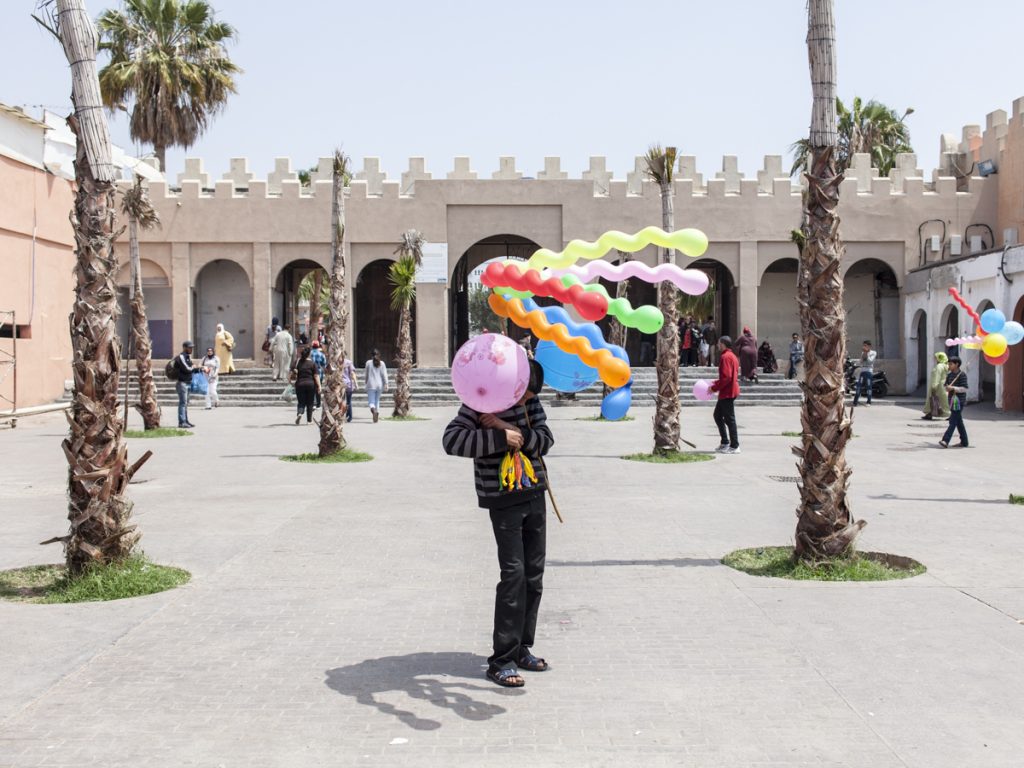
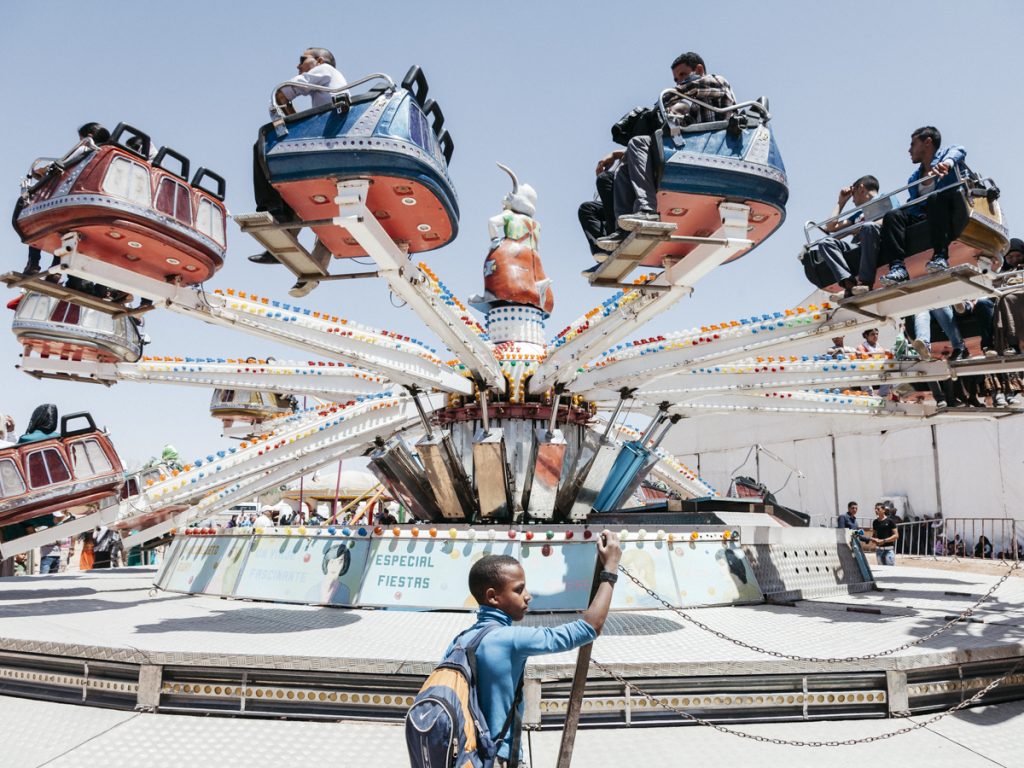
Why weren’t you interested in these questions anymore?
As I developed above, my practice changed a lot between the moment I started working in Morocco and the moment I settled there. Finally, what interests me today is to document my daily life, wherever I am.
Even if there are many photographs of Morocco, it is sometimes difficult to photograph Moroccans less inclined to let themselves be photographed than other people. What was your experience as a resident?
I’d say it’s more difficult for a Moroccan than it is for me. Many photographer friends in Morocco spoke to me about their difficulty in doing street photography in Morocco. For my part, I had no problem taking pictures. Indeed, as a foreigner, I have the advantage of being considered as a tourist with a camera around my neck and therefore it is much easier to take photos, people do not mistrust. On the contrary, it facilitates contact with people. Many people, often young people, come to see me so that I can photograph them. They pose proudly in front of my lens. With social networks today it is very easy to send them photos.
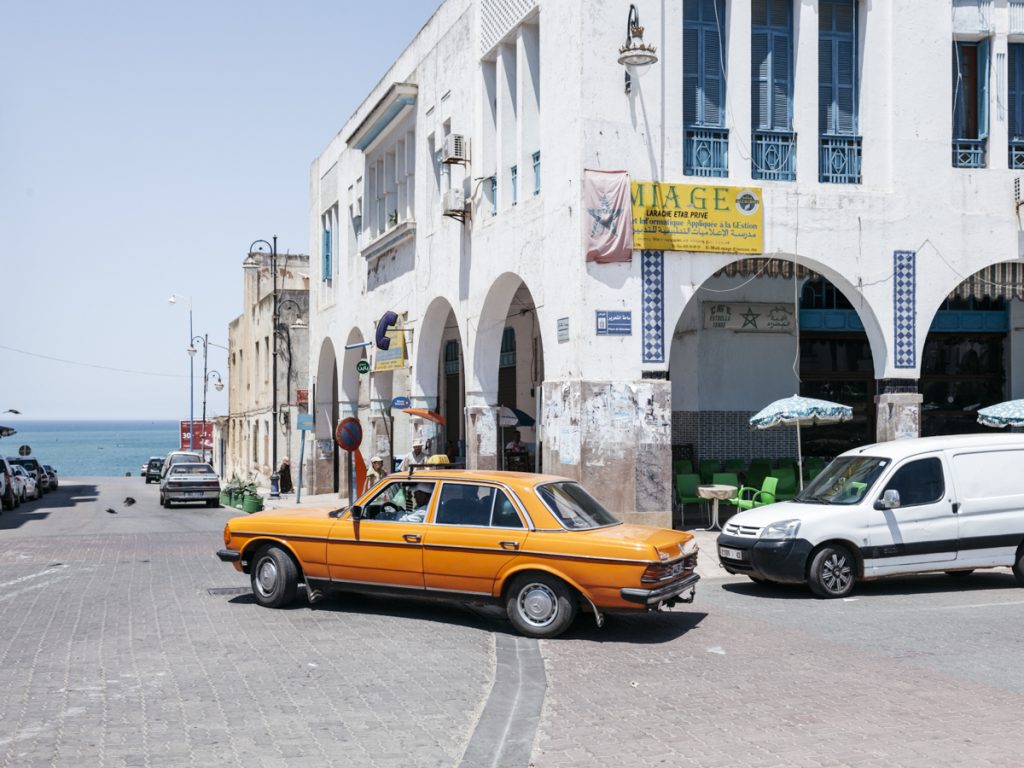
Is this work in Morocco now finished? I understand you’re now living in Lisbon.
It took me a while to accept that they were finished because I still had lots of ideas and places to photograph, it could be a lifetime’s work. But I finally decided to leave Morocco and thus put an end to the project. I am now based in Lisbon. This does not prevent me from continuing to make many more round trips to Morocco for work orders or simply to visit friends. And who knows, maybe a new job will emerge. I’ve started a new work in Portugal, mostly tracks, I don’t know yet what it will be, there will still be different projects and series and that will follow. I am very interested in colour which is very present but I also continue to document my daily life and my environment. To be continued…
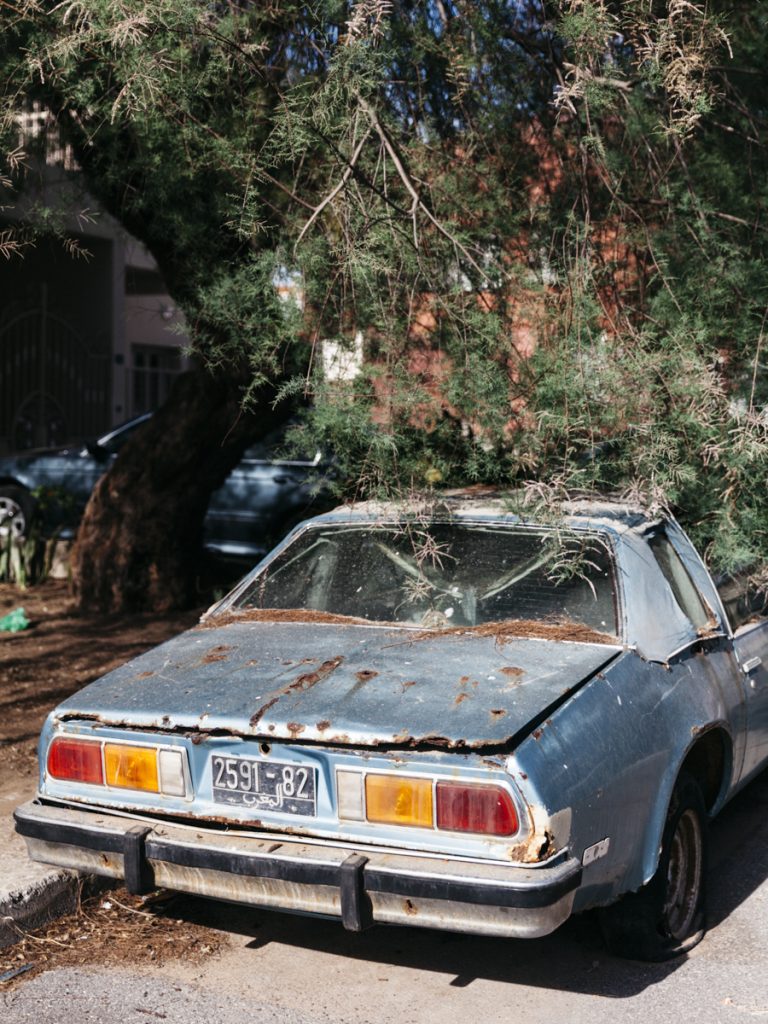
Top 5 photobooks
At home, Bruce Wrighton – Ed. Only Photography; First Edition, First Printing edition (2010)
East – West, Harry Gruyaert – Ed. Textuel
Dark Knees, Mark Cohen – Ed. La Bal Xavier Barral
Le livre de la Jungle, Yann Gross – Ed. Acte Sud
Vider Paris, Nicolas Moulin – Ed. Isthme edition
Interview Jerome Lorieau
Photographer’s Links: Website / Instagram / HL Profile

